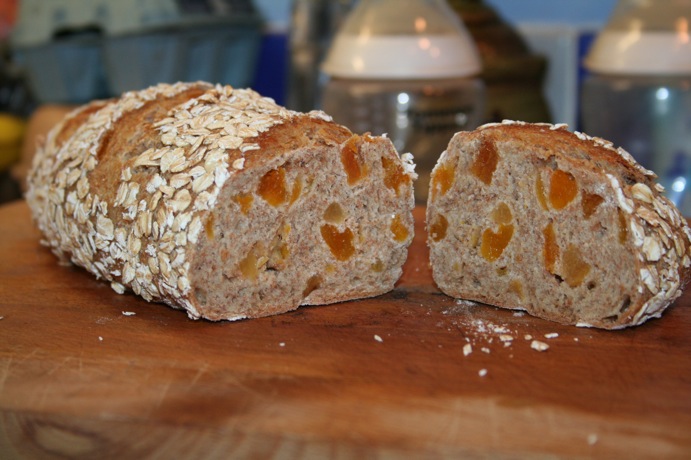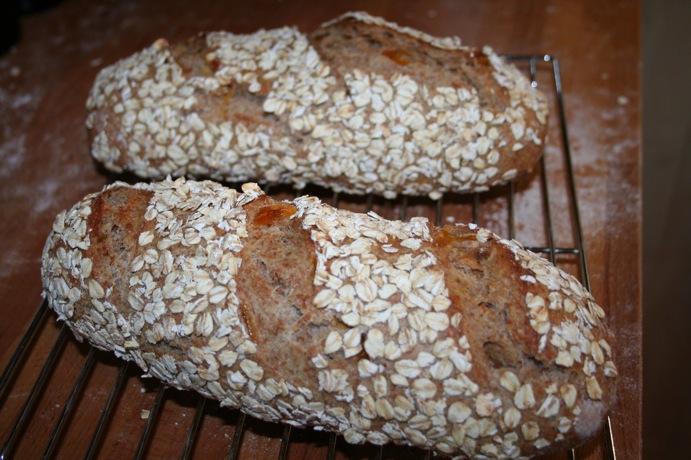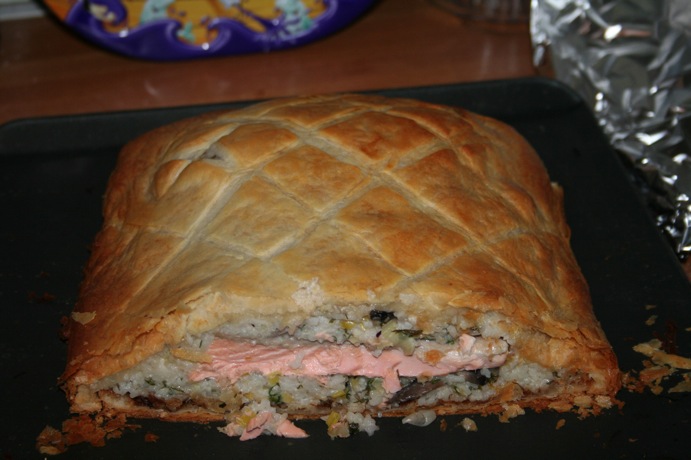This blog was originally intended to be a “personal’ blog, complementing the professionally oriented “Overdue Ideas‘ blog. However, we never really managed to keep this up to date – partly because of time, but I think mainly because there was no natural audience for the comings and goings of our everyday lives apart from close friends and family – who already knew what we were doing.
Recently I tweeted what I was cooking for our evening meal, and got a couple of requests to share the recipe, and it made me think that perhaps it was worth resurrecting this blog as a food focused blog. This was there will be a reason to blog on a regular basis (after all, we eat every day, even if it isn’t always that interesting), and if no one else is interested we can look back and see what we’ve cooked, and what we thought.
So, here is the first entry – unfortunately no pictures with this one, as we cooked and ate it on New Year’s Eve, but here is the recipe and comments:
Mushroom and Pickled Walnut Suet Puddings (serves 2)
This is actually a simple variation on a Waitrose Recipe card for “Mushroom and Chestnut puds“. I was originally going to follow this directly, but I initially had difficulty finding the chestnuts, and decided to try it out with pickled walnuts instead. The results were good, although we both felt that the walnuts were a bit to vinegary, and if I did it again I’d probably cut down the walnuts and mix with chestnuts – I do think the walnuts add something a bit extra to the recipe. The original recipe makes two small puddings (300ml each), but I made one large one. Anyway, the recipe here is as I cooked it.
The other thing about the recipe that I was both pleased and suprised by was how easy the suet pastry was to make – and how light it turned out – my first attempt at a suet pastry and I was really pleased with it.
Olive Oil
250g Portabellini (or field) mushrooms
Clove of garlic
Pickled Walnuts (I’d estimate about 6, but to taste really)
1 tbsp tomato puree
300 ml good red wine (I used a Barolo, but any meaty red wine – a Burgundy or good Cabernet Sauvignon from elsewhere would be good)
150g self-raising flour
75g vegetable suet (I used Atora – I don’t even know if there are other brands)
Salt
Pepper
Water
You will also need a 600ml ovenproof bowl – greased with olive oil, some kitchen foil, some string, a saucepan (with lid) large enough to accommodate the bowl and a steamer or trivet.
I made the pastry first:
Mix the flour, a pinch of salt and suet in a bowl. Add about 100ml (or a bit more if needed – I would guess I actually used more like 110ml in the end) cold water and mix to a dough. The original recipe describes this as a “stiff’ dough, but I would have said it was slightly wet (compared to a normal pastry anyway). I then wrapped this in clingfilm and put it in the fridge to rest.
Then the filling:
Slice the walnuts (about half a centimeter thick) – don’t worry if they disintegrate a little.
Chop the mushrooms into chunks – a little bigger than bite sized – fry in olive oil until they just start to go golden (a few minutes). Crush the garlic, add to the mushrooms and continue to cook for about another minute. Add the sliced walnuts, the tomato puree and the red wine. Season with a pinch of salt (I think I overdid this a bit, so I’d just add a small pinch now, and season again towards the end), and a generous grinding of pepper.
Bring the mixture to the boil, then reduced the heat and simmer for about 5 minutes, then take off the heat.
Get the pastry out of the fridge, and remove about a quarter and put to one side. Shape the remaining dough into a ball, then roll out into a circle, until it is big enough to fit the bowl with a little extra over the edge (don’t forget to grease the bowl with olive oil). Line the bowl with the pastry.
With the smaller piece of dough that you reserved, roll a circle large enough to cover the top of the pudding.
Pour the filling into the lined bowl – you may not need it all, I would suggest not filling quite to the top, as my pudding leaked a little in the end. Wet the edge of the pastry around the rim of the bowl, and push the pastry cover down over the top making sure it seals all the way round. Trim away excess pastry with a knife. I was worried when I poured the filling in that the liquid would just soak the pastry, but this didn’t happen I’m glad to say.
Cover the pudding with an oiled piece of kitchen foil, and tie this into place with string. Place the pudding on a steamer/trivet in a large saucepan with water in the bottom, put the lid on, and bring to the boil. Steam the pudding for about an hour – check regularly to make sure the water doesn’t boil dry – just top it up if it looks like this might happen.
Take the pudding out of the steamer, loosen around the rim with a knife, put a plate over the top, and turn over. Lift the bowl off (I found this very difficult with a hot bowl and rather clumsy oven gloves) and hopefully you will be left with a perfectly formed pudding.
We served with boiled potatoes, but some greenery – perhaps some broccoli – wouldn’t go amiss.




